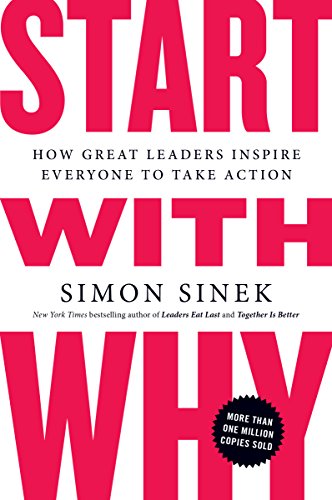

This article is an excerpt from the Shortform summary of "Start With Why" by Simon Sinek. Shortform has the world's best summaries of books you should be reading.
Like this article? Sign up for a free trial here .
How do you spread your marketing message? How do you make sure your marketing communication is striking a chord with your target audience?
According to entrepreneur and author Simon Sinek, an effective marketing message starts with WHY. We’ll cover why you should start with why in your marketing, and how to do it effectively.
Your Marketing Message: Why Start With Why?
Certain companies and leaders inspire people around them to achieve amazing goals. They mobilize people beyond using personal incentives and rewards – instead, they make people feel a sense of purpose and belonging to a community. This is the core of their marketing message.
These effective marketing messages Start With WHY – they communicate the purpose of what they are doing and the impact their work will have.
The marketplace is made up of all the customers, shareholders, competition, supplies, money, and all the other factors that make an economy work. The marketplace is characterized by chaos and disorganization. While your organization has structure and purpose, the world outside it doesn’t.
Getting your marketing message out and into that chaotic space is tough, especially since the only contact your organization has with the marketplace is at the bottom of the cone at the WHAT level. If your WHAT doesn’t embody and communicate your WHY, the marketplace won’t hear it.
For small businesses, this isn’t a huge problem. That’s because the company’s CEO–the head of WHY–is intimately involved in the company’s WHAT, too.
But as a company grows, and there are more HOW and WHAT level employees, the WHY leaders become farther removed from the marketplace. The WHY leaders have less capacity to communicate directly with customers, and become more involved with managing the HOW.
Put another way, as a company grows, the WHY leadership becomes the limbic brain of the company, unable to use language to express its WHY to the marketplace with an effective marketing message. That purpose is left to the WHAT level, which creates the products, the marketing campaigns, and the customer support functions.
The key, then, is to communicate your WHY clearly throughout every level of the organization. In doing so, you’ll be able to articulate your WHY to the marketplace with your marketing message, too.
Good Marketing Messages Are About Listening
This section explains how an organization–especially a large one–can communicate its WHY to the marketplace effectively with a great marketing message.
This centers around two big ideas: the power of symbols and The Celery Test.
The Power of Symbols in Your Marketing Message
A symbol is defined as an object imbued with additional meaning. It’s an object that represents an idea bigger than the thing itself.
Here are two examples of powerful symbols:
- The United States Flag: Literally, the flag is just a few pieces of cloth stitched together. But as a nation, Americans assign powerful symbolic meaning to it. It represents the beliefs of the country—freedom, equality, and opportunity. It’s such an important symbol that people will follow it into war.
- Ronald Reagan’s “Hero”: In 1982, Lenny Skutnik was invited to sit in the House chamber during the State of the Union Address. A few weeks earlier, Skutnik had jumped into the Potomac to save passengers after an Air Florida airplane crashed. President Reagan understood the power of symbolism, and Skutnik’s presence was a powerful representation of American bravery and values.
All societies use symbols to reinforce their core beliefs. And the stronger the core belief, the more powerful the symbol. You can use symbols effectively in your marketing message, too.
Logos: The Symbols of Business
Logos are a visual object that identify a company, but they can also be symbols of what a company stands for and powerful tools in a marketing message.
Unfortunately, most companies don’t use their logos this way. Instead, companies act like dictators, telling customers who they are, what they do, and why we should be loyal to them. And like dictators, these companies manipulate people into following them. In these cases, company logos are just a way to communicate the business’s name, not to share their meaning. This doesn’t lead to an effective marketing message.
In order to work as a symbol, a logo–and the company behind it–must be inspirational. The logo has to tell people something about the company beyond what they sell: it has to symbolize the company’s beliefs.
Take the Harley-Davidson logo, for instance The logo isn’t just a motorcycle brand anymore. It represents more than that: it symbolizes an outlaw mentality. The logo is so meaningful that merchandising makes up 12 percent of the company’s revenue. This is an effective marketing message example.
The major takeaway for businesses is this: symbols are another way to amplify your marketing message using the Golden Circle megaphone, because they can quickly and easily communicate your WHY.
———End of Preview———

Like what you just read? Read the rest of the world's best summary of "Start With Why" at Shortform . Learn the book's critical concepts in 20 minutes or less .
Here's what you'll find in our full Start With Why summary :
- What Steve Jobs did right compared to every other business leader
- How to define your organization's WHY
- How to help your organization avoid losing its edge as it succeeds






